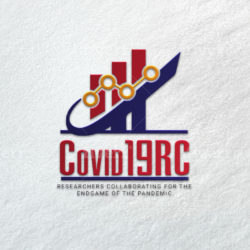The latest instalment of Andrea Galeotti and Paolo Surico’s video explainer.
Masks please
Mustafa Kaba draws our attention to an article about the usefulness and practicality of wearing masks by a group at Yale.
App and data for NYC
Grace Tsiang draws our attention to a useful new app and source of data for NYC.
What are the best masks?
Grace Tsiang point us to a quite recent a comparison of medical masks worldwide. She adds:
I think that as economists, we should remind policy makers (such as WHO) that testing facemasks in in clinical settings will always miss the substantial shift in behavior when consumers are given a “gift” of advanced technology pushing a production possibilities frontier outward. Consider substitution by consumers towards more fun activities when the safety of those actions are reduced. That substitution affects the new cool tech’s EFFECTIVENESS in use. The fancier the construction & materials, the lower is the incentive to avoid risky behaviors.
Simple cloth masks function far better in life than in clinical comparisons, because they are first and foremost Reminders to use best practices. All the desired practices, such as avoidance of going out in company while sneezing/coughing, handwashing after contact with other people or communally touched surfaces, and other cleaning practices remain very costly with mere cloth than some (overly?) trusted and possibly incorrectly used higher tech respirator.
Help fund masks
Who is at risk?
From Michele Belot:
The key role of essential workers in stopping the spread of the virus
While we are all becoming accustomed with recommendations to washing our hands regularly and to practicing social distancing, there is a concern that the virus can still spread widely through a minority of people who are in contact with a large number of members of the public and/or who handle goods that are passed on to others. Even if most of us comply with social distancing measures, the virus can continue to spread easily through a minority of people.
O*net, a US-based platform classifying professional occupations has developed a measure of the degree of exposure to diseases and infections. Of course, most of these professions are in the medical sector, where protective practices are already common.
There are however several other professions outside the medical sector that are likely to remain considered essential throughout the pandemic but where protective practices are less common and rigorous. Examples include:
- Retail salespersons, concierges, restaurant staff, and cashiers.
- Couriers and messengers
- Home health aides
- Workers involved in the preparation of deliveries of goods
- Bank and post office receptionists
- Plumbers, handymen
- Police
It is imperative that those in these professions follow the WHO and professional guidelines, including wearing a protective mask, washing hands regularly, and between every interaction with members of the public. Wearing gloves without disinfecting them between interactions may protect the worker but will contribute to spread the virus to members of the public.
How to sew a mask
From Grace Tsiang: how to sew a mask.
Wear a mask
From Jan Kulveit: A very inexpensive and effective mitigation measure is the compulsory wearing of masks. This has been implemented in several Asian countries. Masks do not protect the wearer – but they protect from infection by pre-symptomatic and asymoptomatic individuals. They also remind everyone of the need for distancing and lack of a mask is a signal of someone not taking the situation seriously and so should be avoided. Additional policy recommendations from his group here.
